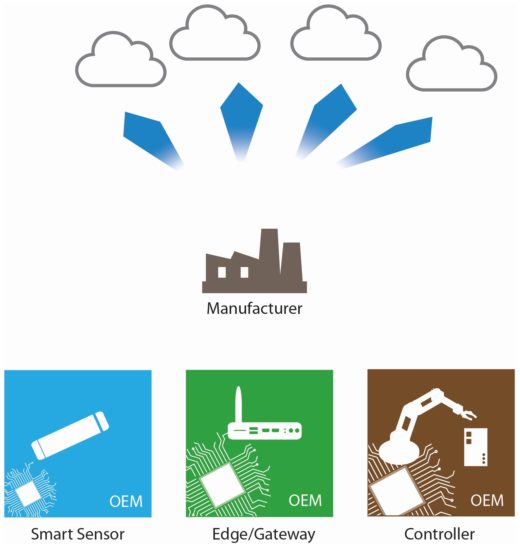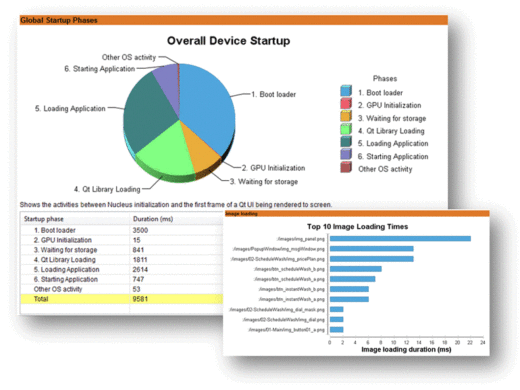Article Roundup: IIoT Fragmentation, Inconclusive Formal Assertions, Emulation for Drone SoCs, Automotive Ethernet & Embedded UI Performance Issues
- A New Approach To A Fragmented Industrial IoT
- Concluding Inconclusives
- How Hardware Emulation Helps Drones Take Flight
- Driving By Ethernet
- How to Conquer Those Vexing UI Performance Issues
A New Approach To A Fragmented Industrial IoT
SemiEngineering
 The IIoT requires devices (regardless of OS, processor class, or processor architecture) to support fragmented device management solutions, cloud backend integration, and advanced security. That means each connected device is a purpose-built custom implementation. The Mentor Embedded IoT Framework addresses this fragmentation by standardizing end device implementation through the integration of cloud vendors’ SDKs and the device OS or hardware platform.
The IIoT requires devices (regardless of OS, processor class, or processor architecture) to support fragmented device management solutions, cloud backend integration, and advanced security. That means each connected device is a purpose-built custom implementation. The Mentor Embedded IoT Framework addresses this fragmentation by standardizing end device implementation through the integration of cloud vendors’ SDKs and the device OS or hardware platform.
Concluding Inconclusives
SemiWiki
 Inconclusive results from formal verification methods can be particularly challenging to resolve. A key strategy for debugging inconclusive assertions revolves around reducing formal complexity, which may be the source of these inconclusive assertions in the first place. This article presents an example where the arithmetic blocks and FIFO are verified separately to reduce complexity.
Inconclusive results from formal verification methods can be particularly challenging to resolve. A key strategy for debugging inconclusive assertions revolves around reducing formal complexity, which may be the source of these inconclusive assertions in the first place. This article presents an example where the arithmetic blocks and FIFO are verified separately to reduce complexity.
How Hardware Emulation Helps Drones Take Flight
Tech Design Forum
Drones are quickly growing from exciting, remote-controlled toys into professional tools for delivery, photography, agriculture, and more. At the heart of this evolution from toy-to-tool are sophisticated SoCs, designed by companies like Artosyn, that incorporate artificial intelligence for fully automatic flight. In this interview, the founder of Artosyn discusses how emulation shortened the time to find and fix bugs on their complex SoC, saving months in the design cycle.
Driving By Ethernet
SemiEngineering
 Autonomous drive will place much more stress on the internal communications systems of vehicles due to an increase in the number of sensors and ECUs transmitting and receiving data. To transmit the vast amounts of data needed for autonomous applications, automotive OEMs are beginning to use Ethernet as a high-bandwidth data backbone. However, a primary challenge for automotive Ethernet is the implementation of time-sensitive networking to ensure that safety-critical data is given priority on the network. This article discusses everything from design to testing, to evolving standards for Ethernet in automotive applications.
Autonomous drive will place much more stress on the internal communications systems of vehicles due to an increase in the number of sensors and ECUs transmitting and receiving data. To transmit the vast amounts of data needed for autonomous applications, automotive OEMs are beginning to use Ethernet as a high-bandwidth data backbone. However, a primary challenge for automotive Ethernet is the implementation of time-sensitive networking to ensure that safety-critical data is given priority on the network. This article discusses everything from design to testing, to evolving standards for Ethernet in automotive applications.
How to Conquer Those Vexing UI Performance Issues
Electronic Design
 The user interface (UI) is a crucial feature of mobile devices. Graphical interfaces, especially touchscreens, must be responsive, smooth, and quick to startup to provide a quality user experience. Visualizers are powerful analysis solutions that enable designers to pinpoint framerate drops, sluggish startup processes, and lagging responsiveness. This ensures UI performance and a superior user experience.
The user interface (UI) is a crucial feature of mobile devices. Graphical interfaces, especially touchscreens, must be responsive, smooth, and quick to startup to provide a quality user experience. Visualizers are powerful analysis solutions that enable designers to pinpoint framerate drops, sluggish startup processes, and lagging responsiveness. This ensures UI performance and a superior user experience.
